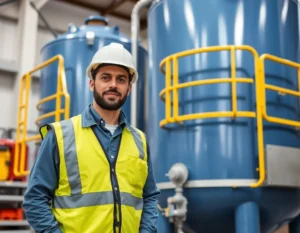In the world of steel, the term "miscellaneous" covers a wide range of techniques and procedures that allow the creation of products of high quality and resistance. Steel miscellaneous, although diverse, share a common goal: to improve the properties and performance of steel for various applications.
In this blog post, we will explore what a miscellaneous is, the advantages these procedures offer, and the different types of miscellaneous techniques and procedures in steel. Join us to discover how these methods can benefit your projects and optimize the use of this versatile material.
What is a miscellaneous?
Broadly speaking, steel sundries are elements that complement the main steel in a complete structure or component, helping to support and maintain the element in optimal conditions. These additional components are essential to ensure the functionality and durability of steel structures, as we will see later.
You can incorporate steel miscellaneous items into your industrial machinery. Common examples include anchors, connecting elements, pipes, valves, locks, brackets, handles, and doorstops, among others.
Often, when planning to use a steel structure for a specific purpose, the need for miscellaneous items can be overlooked. However, it is important to remember that even with a well-built steel structure, miscellaneous items are crucial to complete and optimize the operation of the machinery.
What are the advantages of miscellaneous?
Miscellaneous steel, although small and complementary, play a crucial role in improving the stability and finishes of the structures. These additional components also contribute to the maintenance of the main element, in this case, the steel, ensuring that it remains in optimal condition both in use and design.
Among the main advantages of steel sundries are:
- Stability improvement: Miscellaneous provides additional support and reinforces structures, increasing their overall strength and stability.
- Optimization of finishes: They help achieve more precise and aesthetic finishes, which is crucial for applications where design is important.
- Simple maintenance: They facilitate the maintenance of main structures, extending their useful life and keeping them in good condition.
- Versatility: They offer solutions for a wide range of industrial and commercial applications, from connections and supports to specific machinery parts.
Some specific examples of miscellaneous steel include:
- Packaging connections: They facilitate the safe transportation and storage of products.
- Divisions to weld: They allow precise and safe welding in different parts of the structure.
- Screw-in items: They guarantee firm and removable connections.
- Parts to make connections: They ensure the integration and operation of various components.
- Valves: They control the flow of liquids and gases in industrial systems.
- Segments to make splices: They connect different sections of pipes or structures.
- Items to make forgings: They allow the creation of custom and resistant components.
- Locks and handles: They increase the security and functionality of doors and accesses.
These components are usually made of stainless steel, which guarantees their durability and resistance to corrosion. At Perez, we are prepared to develop and offer a wide range of miscellaneous steel products, adapted to your specific needs. Our team of experts is ready to advise you and help you select the components that best suit your projects, thus ensuring optimal performance and greater efficiency.
Types of techniques and miscellaneous procedures in steel
Finish
The finishing consists of removing the metal from welding or portions of the base metal that were loose. This process can be done by machining, grinding, chiseling or routing. The objective is to ensure that the adjacent weld metal or base metal does not have notches or recesses, and that the necessary reinforcements or complements are placed so that the structure is sufficiently resistant.
Repair
Repair focuses on fixing damaged work, such as faulty welds, breaks or cracks, without compromising the quality of the material. This process is essential to maintain the structural and functional integrity of steel components.
Adjustment
Adjustment involves preparing and adapting surfaces by applying coatings, removing dirt and adhered materials such as grease. It also includes rust removal using polishing or brushes. This procedure is essential to ensure that surfaces are clean and ready for use or to receive additional treatments.
To find the best steel miscellaneous manufacturing, trust Perez Precision Works. Our commitment to quality and precision allows us to offer solutions that meet the highest industry standards.



